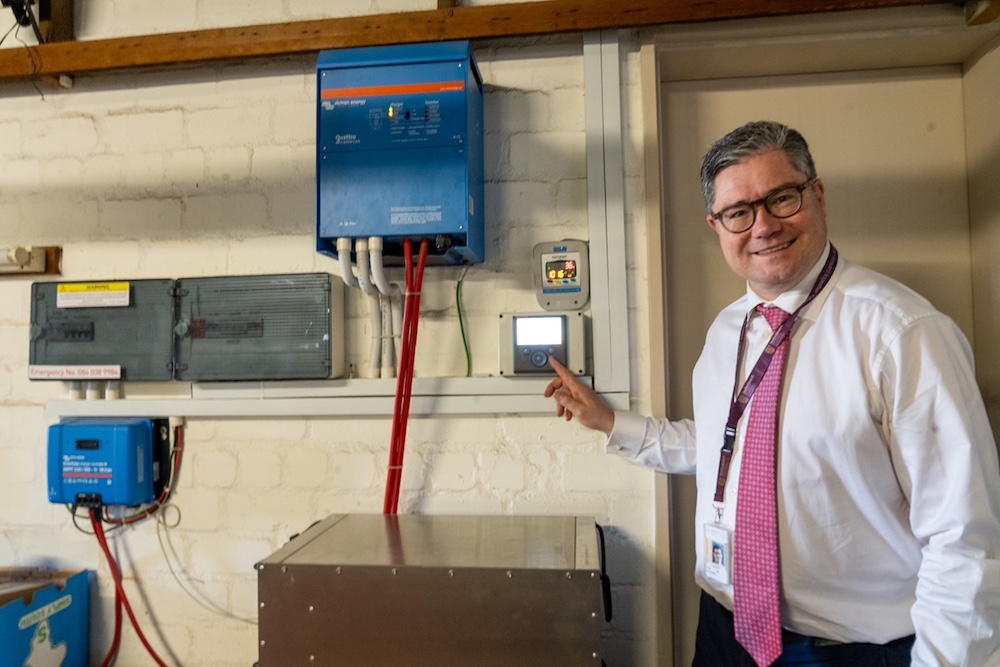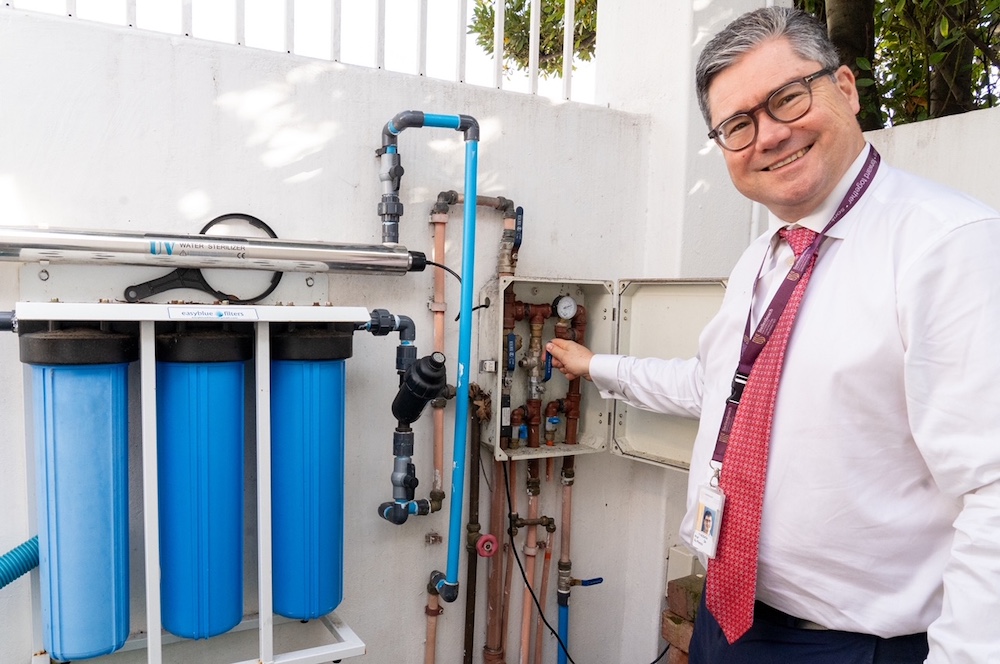More and more South Africans are looking for backup power solutions to their homes as Eskom's unpredictable loadshedding drives them insane. And while you are shopping for batteries and photovoltaic panels, don't forget what happened in 2018 when we faced Day Zero and started buying every bottle of water we could get. While getting off the grid, maybe consider becoming greener and saving on water usage.
You might say it is easier said than done, but if Prof Stan du Plessis, Stellenbosch University's Chief Operating Officer, could find time and energy to get him and his family almost off the grid and on a greener road, so can we all.
We asked him about his green journey; let's hear what he and his family are doing to live a less reliant life on grids and pipes and more on natural sources.
Q: Prof Stan, how “green" are you on a scale of 0 to 10, and why do you say that?
Prof Stan: I'll give us a 7 for a strong start but with a few important challenges remaining including electric vehicles charged by solar power.
Q: When did your “green journey" begin?
Prof Stan: My wife Helena has always been very environmentally conscious, and my daughters really encouraged me in the same direction. I remember how our eldest daughter, then 7, asked me on the way to school what I was going to do that day. As it turned out I was going to address a group of students on the international challenges with mitigating climate change. She immediately took a National Geographic from her backpack and showed me a picture of a large (and very old) sturgeon recently caught in the rivers of central Asia and she asked me very seriously why people would do that. I replied that people want caviar for sushi, to which she offered me a deal: If I told all the students at the conference no longer to eat sushi with caviar, she would tell all the teachers in school the same. So, this young activist got me thinking about what we can do, and how we can convince people, including our own families, to act consistently with our environmental consciousness, since as an economist I didn’t believe people would just stop eating sushi because I had asked them nicely.
 Q: What were the first things you changed in your house to become more kinder to our planet?
Q: What were the first things you changed in your house to become more kinder to our planet?
Prof Stan: We installed a rainwater system and 10 000-litre water tanks to collect the water for garden usage. Later we added a sophisticated three-phase filter to clean the water to a standard high enough for domestic use. At the same to we changed the garden to be more water-friendly by switching to more local flora.
Q: What measurements did you put in place to reduce your dependency on Eskom and Stellenbosch Municipality (water)?
Prof Stan: The rainwater collection and filtration system together with water conservation habits we adopted during the last drought, including a pool cover and the disconnection of the irrigation system in our garden, reduced our water usage from the grid dramatically. We added a grey-water system to use bath and shower water in the garden.
On the electricity front, we installed an inverter with solar panels that can generate up to 4 KWHp with a substantial battery bank. For about two-thirds of the year, we are largely off the grid in terms of power but when we have sustained poor weather as these last few weeks, we depend on grid power to charge the batteries. The added benefit is that we have not been inconvenienced by load-shedding as we have sufficient battery power to last through the worst load-shedding we've experienced with ease.
A third initiative that is actually quite important for us as a family is waste management. We sort the house's refuge carefully and have minimal waste to be collected by the municipality. On Tuesday mornings I often push an empty black bin to the sidewalk since I don't want the municipality to forget about our house and do want them to collect the glass and other recyclable waste. All organic waste is collected in compost bins for our garden and plastics are cleaned and compacted in eco-bricks.
Q: It was a costly exercise, but are you seeing the rewards in your utility accounts? How long did it take to break even?
Prof Stan: With current electricity rates you can repay the capital outlay for a solar installation in 4 years, but our large battery bank will not easily be repaid from savings on our utility bill. These batteries protect us against loadshedding and help us to make excess solar power generated during the day available at night but it is not nearly as economically efficient as the panels themselves. Of course, as technology lowers the price of batteries these considerations will change in the foreseeable future.
Q: Do these systems require a lot of maintenance? How do you do that?
Prof Stan: They do require maintenance and since it is not my strong point, we have contractors who service the systems.

Q: How do you keep a tab on your family's usage? Was it difficult for them to buy in, or are they as nature conscious as you are?
Prof Stan: They are more conscious than I am! Especially with the waste management they had to show me and convince me of better practices. My contribution was perhaps most clear with our electricity consumption; with the new system, we got a dashboard linked to the PV panels, inverter, and batteries. It really helped me to see our electricity usage and also to help us plan our energy-intensive activities around the availability of solar power or stored power.
Q: What is your advice for our staff who want to go the green route at home? How should they start? What should they do first?
Prof Stan: Behaviour change is the cheapest and can have a high impact. I mean maintaining those good habits you learned during the drought with respect to water and changing your garden to a more water-friendly layout. Secondly, waste management is easy to learn but requires a bit of planning. The beneficial impact is massive though.
Thirdly is solar with an inverter, on the one hand for your geyser and on the other with an inverter for electricity generation.
These steps are to be followed by rainwater collection and a battery bank.
Q: When will you trade in the ML for an electric car?
Prof Stan: I have test-driven three alternatives already. But realistically not before 2024 because I have to save a bit more for the trade-in.
Q: If you could change one thing that will have a massive positive impact on our green planet, what would that be?
Prof Stan: I would price carbon accurately That would raise the price of many products and services which are currently cheaper than they would be if we factored in the full cost they impose on the environment. Economists call that mispricing a negative externality; it means we impose costs we are not asked to pay for when we buy such products and services. This negative externality is the main cause of the climate crisis and can only be fixed if we adopt a full-cost approach to all our activities.

